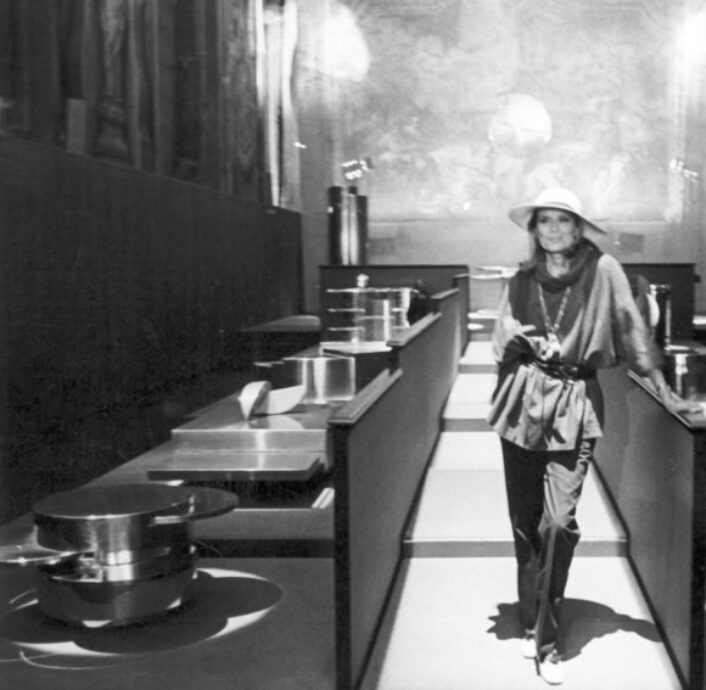Design
Wendell Castle, an American Icon

Wendell Castle at his drawing table. Image courtesy of Surface Magazine.
To say that Wendell Castle is authentic in all that he does wouldn’t do him justice. As one of the first American furniture designers to blur the lines between utility and fine art, Castle creates objects that are are the end product of both his ingenious craftsmanship and unique style.
Who would have imagined that this farm boy from Kansas who always loved to draw would end up as on of this country’s top furniture makers? Castle’s love of drawing, especially cars, wasn’t supported by his parents. In such, he didn’t take his first art class until college.
While completing his undergraduate studies, Castle was puzzled that the consensus around him was that “if something had a function, it couldn’t be fine art.”
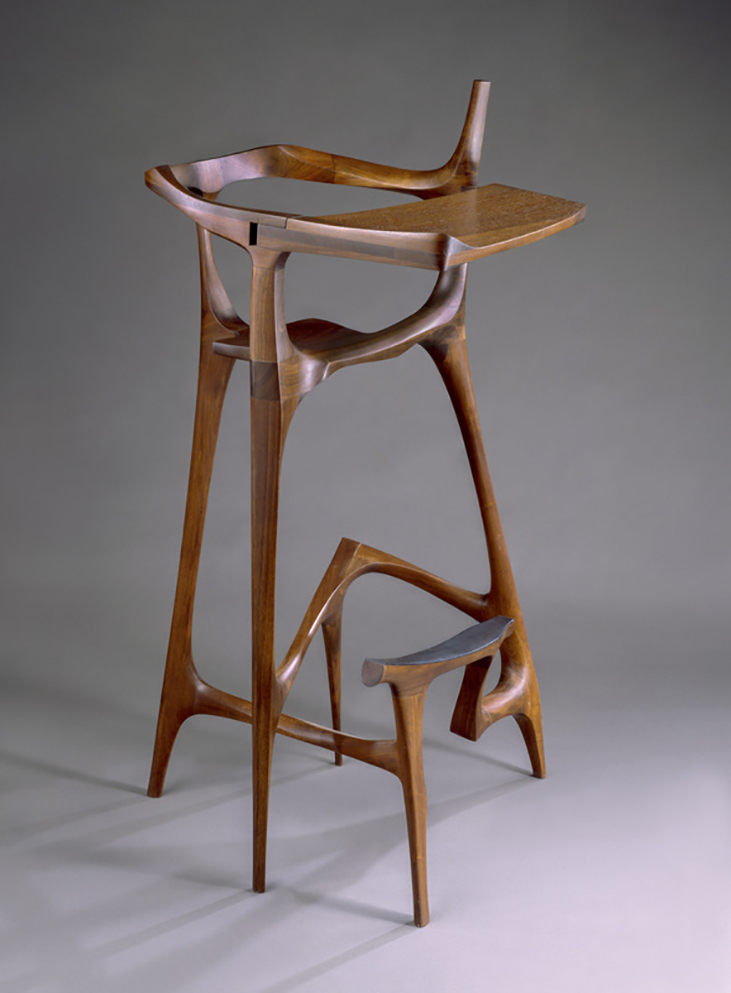
Wendell Castle, Scribe’s Stool, 1961- 62. Similar to Castle’s college creation Stool Sculpture, 1959. Image courtesy of International Sculpture Center.
The common story is that he had his “Aha” moment while making a cabinet. His instructor told him it was a waste of time and that he should get back to sculpting. “Why can’t furniture be art?”, Castle wondered and was insistent upon proving his teacher wrong.
What followed, in 1959, was Stool Sculpture, a twisty, curvy, branchlike counter-height stool that would soon be exhibited worldwide. Needless to say, the instructor was silenced.
Castle’s studio houses 10 craftsmen. The former grain mill is 15,000 square feet and complicated to orient within. In the same space since 1968, it’s made more intimate by a collection of ceramic sculptures courtesy of Castle’s artist wife, Nancy Jurs, which line a stairway. Castle’s collection of classic cars fill the large garage, and as you can image… there’s sawdust everywhere!
Now in the sixth decade of his career, Castle has decided to try his hand at digital work with a robot in tow. The intent, and he succeeds, was to ensure that his furniture maintains a traditional, handmade look.
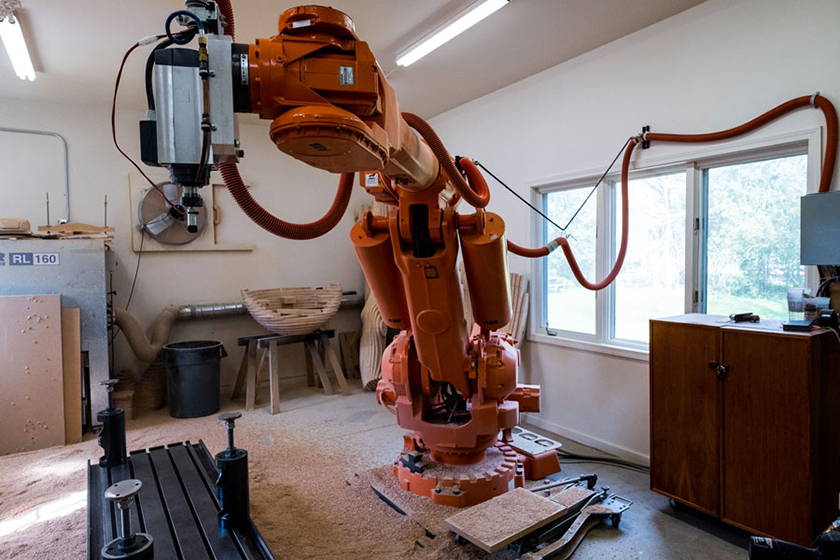
A robot hard at work inside Wendell Castle’s studio. Image courtesy of Surface Magazine.
His sketches come to actuality by carving a model in urethane foam which is 3-D scanned, divided into separate sections and printed as a series of patterns for each additional layer of wood.
The robot, using the scan, cuts out the slices which go on to be joined and laminate by hand at the studio. Layers of wood are glued edge to edge, then carved to create seats perched on unstable-looking trunkline bases.
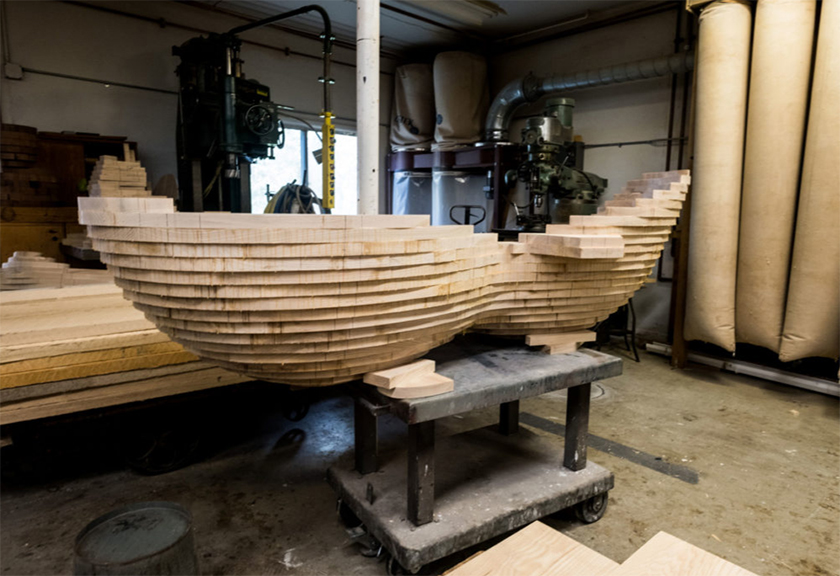
Layers of wood, a creation in progress inside Wendell’s studio. Image courtesy of Surface Magazine.
Recently, Castle exhibited some of his new 3-D projects. The exhibition titled Embracing Upheaval lays reference to his mind moving in every which direction. Block and Free Form, two new series using stack lamination, a process Castle invented in the 1960’s, were the show’s focus.
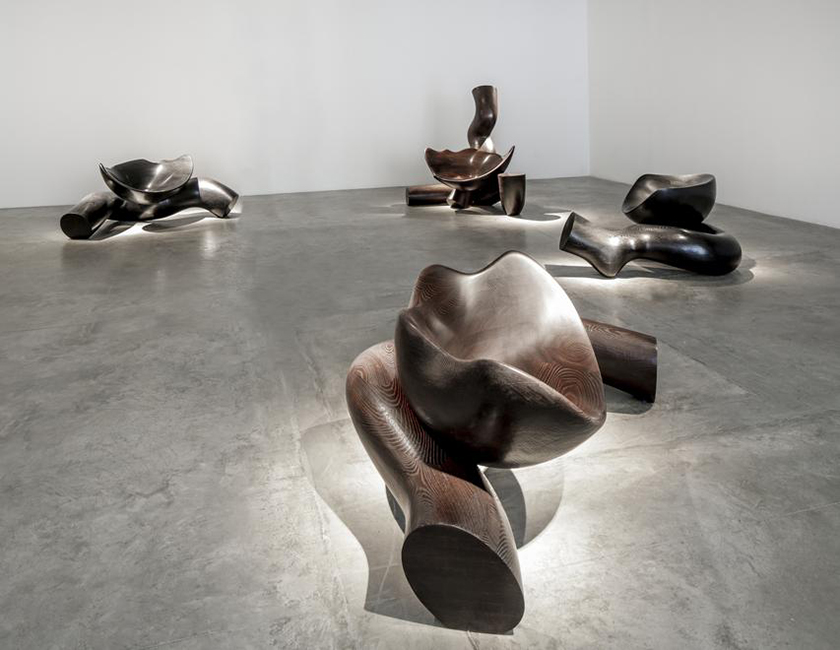
Wendell Castle, Block series on view at Embracing Upheaval at Friedman Benda. This series begins in solid wooden log forms and transforms into a sculptural chair or table. Image courtesy of Friendman Benda.
Block and Free Form designs each originated with literary or musical inspirations. This is evident in titles referencing cities known for music such as Big Easy, Motown, and Gotham, and titles referencing Dante Alighieri’s 14th Century epic poem Divine Comedy.
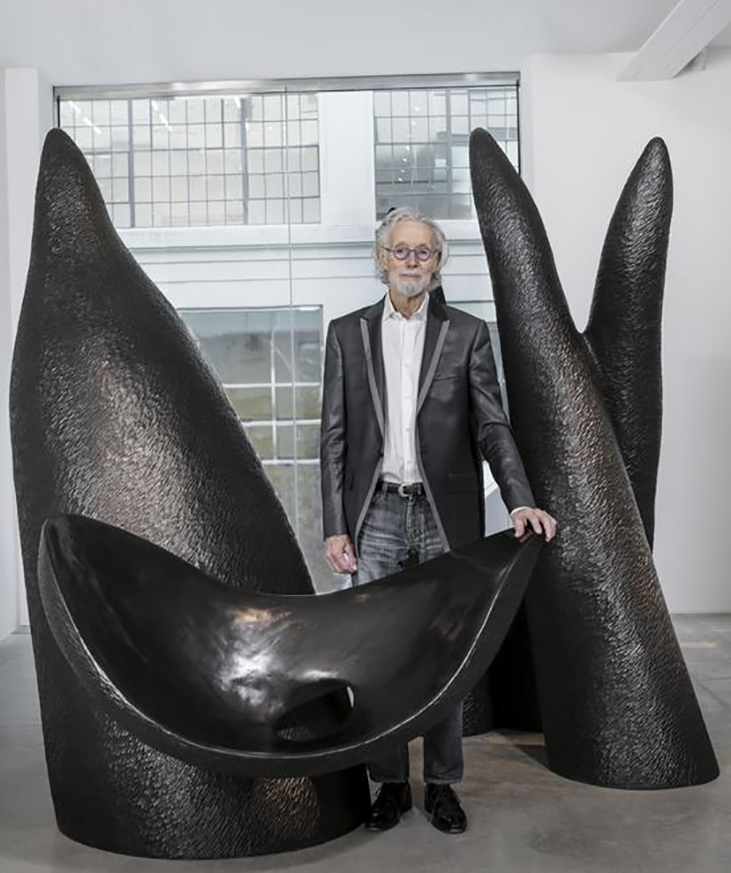
Wendell Castle, Dante’s Heaven, 2015. Edition of 8. Bronze, two parts: 89 X 75.5 X 52.75 and 87.75 X 58.25 X 41.75. Image courtesy of Freidman Benda, photographed by Dan Kulka.
From Embracing Upheaval at Friedman Benda in New York City, the exhibition’s only cast-bronze sculpture has a bucket seat with legs grouped around the back like an assortment of horns.
Dante’s Heaven is a significant two-part work of Castle’s completed in cast-bronze. Its presence and design is the perfect allusion of the 14th Century allegorical poem on sin and redemption.
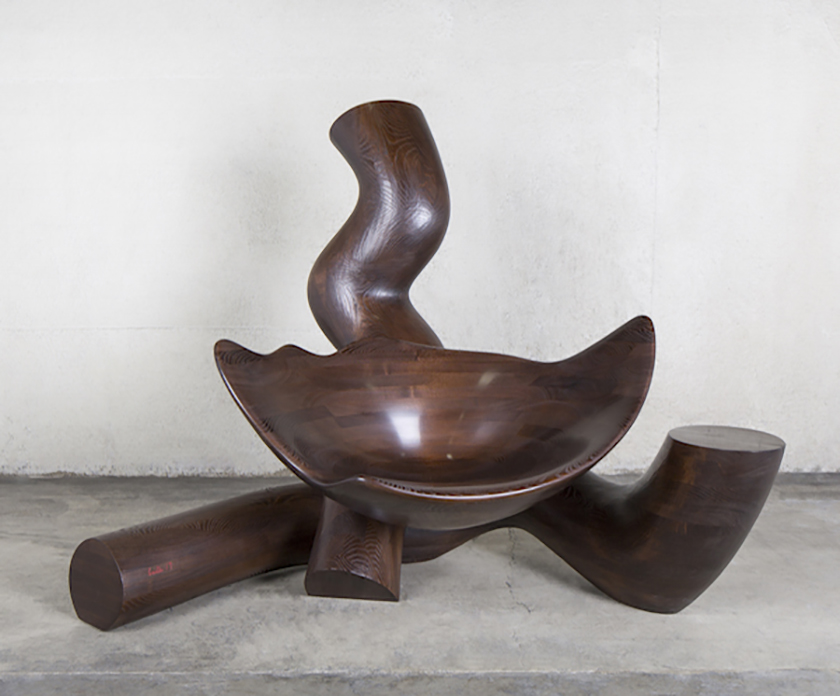
Wendell Castle, Hornet’s Nest, 2016. Stained ash. Image courtesy of Modern Magazine.
Working primarily with ash because it’s a hard wood, resistant to scratching, and has an open grain Castle makes sure the surface is 100% perfect before the stain or varnish is applied.
Castle presented two new works at Embracing Upheaval which were an organic settee in ebonized ash and a set of limited edition bronze stools. Combining his traditional way of hand-crafting with 3-D scanning, Castle is, once again, an innovator.
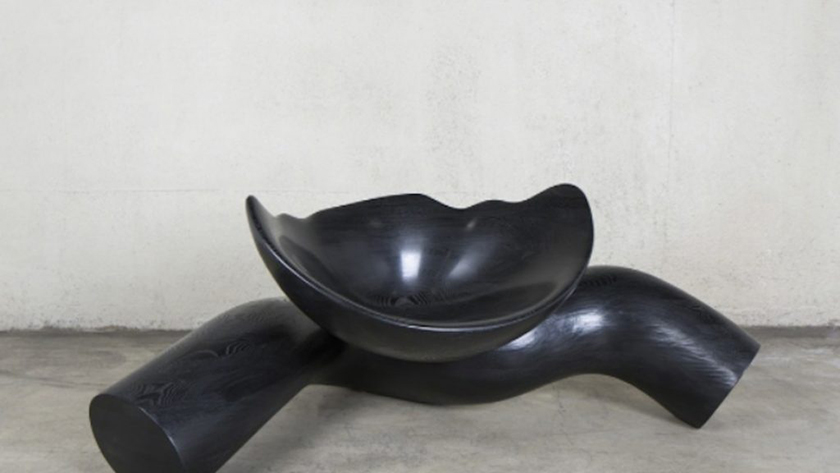
Wendell Castle, Big Easy, 2017. Stained ash. Image courtesy of Modern Magazine and photography by Dan Kukla.
And as we end this piece on a true American design icon, we thought you might enjoy Castle’s 10 Adopted Rules of Thumb:
1. If you are in love with an idea, you are no judge of its beauty or value.
2. It is difficult to see the whole picture when you are inside the frame.
3. After learning the tricks of the trade, don’t think you know the trade.
4. We see and apprehend what we already know.
5. The dog that stays on the porch will find no bones.
6. Never state a problem to yourself in the terms it was brought to you.
7. If it’s offbeat or surprising then it’s probably useful.
8. If you do not expect the unexpected, you will not find it.
9. Don’t get too serious.
10. If you hit the bullseye everytime, then the target is probably too near.

